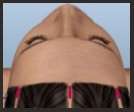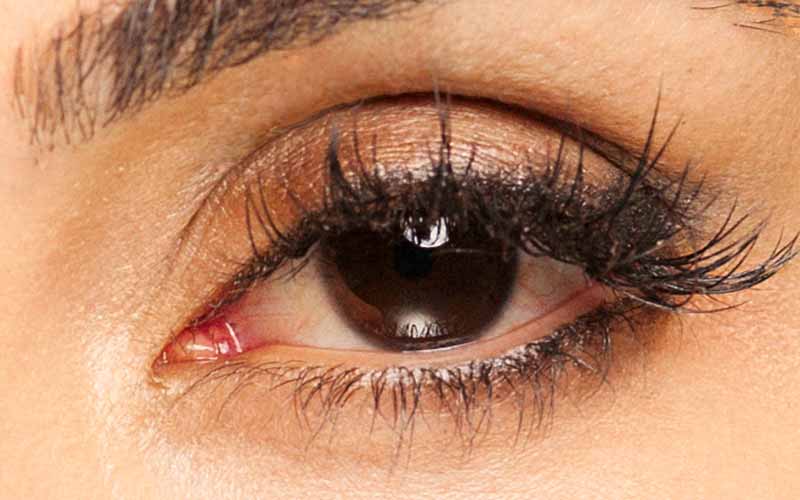Forehead Lift
THE GOAL: to naturally elevate and reshape the eyebrows and produce a smoother, more youthful and rested appearance to the upper third of the face and around the eyes.
Brow Lift Terminology Notes
Video
A brow lift and a forehead lift are essentially the same thing.
A BROW LIFT involves strategically releasing the muscles and tissues that cause furrowing and drooping (ptosis). It helps smooth out horizontal furrows and eliminate frown lines (that make a person look angry or exhausted) in the forehead, while elevating the eyebrows in a glamourous yet natural manner in turn diminishing sagging upper eyelids.
ENDOSCOPIC BROW LIFT is Dr Haworth’s preferred method since it can attain the aforementioned goals through small incisions hidden within the hair. Whereas most plastic surgeons utilizes 5 of these incisions, Dr Haworth performs this surgery through 4 and feels he can attain unparalleled results in terms of elevation, control of final brow shape and longevity. This state-of-the-art operation is made possible by the use of an endoscopic (and microscopic) camera to guide the specialized curved instruments needed by the surgeon.

“OPEN” OR “BI-CORONAL” BROW LIFT is an older operation that involves gaining access to the deeper structures via a full-thickness incision from ear-to-ear through the scalp hair. The final lift depends upon pulling up the total brow and cutting off any hair-bearing tissue that the surgeon feels is excessive. Once closure is carried out, a good deal of tension is created across the eventual scar, which can result in hairloss or alopecia. The “open” technique is also associated with significantly more permanent numbness over the scalp.
PRETRICHIAL BROW LIFT is still used on occasion when a patient needs a brow lift but has an excessively large forehead with a receding hairline. By making the access incision along the total length of the exact hairline, not only can a browlift be performed, but also the hairline can be lowered by a centimeter or two. An endoscopic technique cannot achieve these simultaneous goals reliably. Hairloss is less of a problem since the incision is not placed within the hair, only adjacent to it. However, numbness is more likely that with the endoscopic method.

ENDOTINE TRANSBLEPH™ brow lift is done through an upper eyelid incision (the same that would be used for a conventional blepharoplasty).
This browlift is performed in a retrograde manner whereby the brow is “pushed” as opposed to being “pulled” up into position. It is securely suspended into its newly elevated place by a bioabsorbable endotine affixed to the thick skull. Think of it as a picture hook, if you will.
The three types of brow lifts Dr. Haworth performs are:
ENDOSCOPIC BROW LIFT via four small incisions behind the hairline
PRETRICHIAL BROW LIFT via a frontal hairline incision. Extra care is taken in closing this incision with magnification to ensure a nearly invisible scar.

ENDOTINE TRANSBLEPH™ BROW LIFT via an upper blepharoplasty incision.. This unique operation is ideal mainly for male patients who have a moderate degree of upper eyelid/brow hooding at the outside aspect of their eye and who also require an upper blepharoplasty. It is an elegant , subtle solution which accomplishes two goals through one hidden incision. This new technology combines the benefits of a brow lift and an eye lift in one. Manufactured by Coapt Systems Inc., Endotine procedures represent a real breakthrough in soft tissue repositioning and healing. In short, Endotine are soft, tined implants that secure soft tissue in place of interior suturing.
This means little to no trauma to the surrounding tissue, faster surgery time and virtually no scarring. Even more extraordinary, the material itself is bioabsorbable meaning that as the tissue securely heals in its new position, the implant itself gradually and safely reabsorbs into the body, leaving no traces of itself behind.
Candidates
The most appropriate candidates for a brow lift are:
- 20 to 70 years old
- of any age but who have marked furrows, frown lines or an inherited low, heavy brow
- those who have a perceived excess of upper eyelid skin which, in reality, represents skin accumulation from sagging brows
- those who have both brow droop and localized excess upper eyelid skin.
EXPECTATIONS
Of course, individual results can vary, but a brow lift deliver a smooth, fresh, rejuvenated look that will last for years. However, as time goes by and gravity, expressions and aging all take their toll, patients may wish to do supplemental surgery down the line.
What a properly performed brow lift cannot do:
- Remove undereye bags
- Remove true excess upper eyelid skin and fat
- Remove crow’s feet
- Remove all horizontal forehead creases.
- Significantly elevate the midface
What brow lifts can do:
- Elevate the brow to a natural degree. Many patients are understandably reluctant to have a browlift since they have seen many in the media with over-raised brows. Dr Haworth has employed his own methods of the endoscopic technique to avoid an over-pulled look. Remember, excellent plastic surgery is measured in millimeters, not centimeters.
- Control the shape of the eyebrow arch. Again, Dr Haworth has achieved a heretofore unprecedented control of the shape of the brows by elevating more of the lateral aspect of the brow (tail of the brow) to recreate a soft, glamourous look while avoiding one of surprise. On the other hand, too much pull laterally can impart a malevolent, “Samurai” look as seen here.
- “Clean up” or reduce some of the perceived excess upper eyelid skin, which is, in fact, an indirect byproduct of brow ptosis.
- Improve the shape of the lower eyelid especially if it appears sad or droopy at its outer end exposing excess white of the eyeball. This situation may be congenital or an unfortunate result of past eyelid surgery. Dr Haworth may customize his internal surgical maneuvers during the endoscopic browlift in order to improve this look so that more almond-shaped eyes are created.
- Reduce and remove transverse forehead and vertical wrinkles, respectively. By selectively weakening certain muscles which are responsible for undesirable facial expressions and associated wrinkles, these very wrinkles are made to disappear imparting a softer, more inviting appearance to
the face.
OLD THINKING VS. NEW TECHNIQUES
Brow lifts have become significantly more sophisticated than in generations past, resulting in a far more subtle, natural outcomes than ever before. These breakthroughs include:
EYELID FRIENDLY: Often, those who ask for upper-eyelid surgery may get better results with a brow lift instead. Also, by varying his internal method, Dr Haworth can produce a more almondshaped lower eyelid without a separate operation requiring external cutting at the corner of the eye.

SMALL, HIDDEN INCISIONS: New endoscopic and Endotine techniques mean that the brow lift can now be performed using minute incisions either above the hairline or along the upper eyelid. These result in significantly less scarring, numbness and hair loss and a far quicker recovery than the previous generation’s ear-to-ear, opensurgery transcoronal incision.
Pre-Operative Consultation
The pre-operative consultation is where you meet with Dr. Haworth and our staff to review your health, finalize the details of your procedures, order appropriate tests, prescribe medications, discuss your aftercare and answer any questions you may have.
All patients are required to take a blood text a few days before surgery, which you can do at the same time as your pre-op consultation.
To the consultation, we ask that you bring the following:
- Any appropriate health records related to the list of conditions noted above.
- Photographs of you when you were in your teens, twenties and thirties
For patients over 45, we may also require that you provide the following:
- full medical clearance
- EKG
Alternatively, we can coordinate this for you.
CRITICAL PRE-OP CAUTIONARY NOTE
It is absolutely essential that that you avoid all aspirin, aspirin-related, ibuprofen or blood-thinning medications for 2 full weeks prior to your surgery. In your pre-op consultation, we will give you a complete list of these drugs. For our patients, we also provide a password-protected link allowing you to download the list onto your computer. If in doubt about a specific medication, do not take it, call the office first and ask if it is on the forbidden list.
Operation and Recovery Logistics
SURGERY DURATION: 45-60 minutes
ANESTHESIA: General or sedation (“twilight sleep”) we will do everything we can to keep you comfortable. An antiemetic (against nausea) medication is also administered while you are asleep. We not only provide pain medication to control what little pain you may experience postoperatively, but you will be additionally prescribed anti-anxiety, anitnausea and sleeping pills to maximally ensure your comfort and safety
SUTURE OR STAPLE REMOVAL: 3-5 days after surgery
As you wake up from surgery, your face will be exposed while your head will be wrapped. There will be 1 drain which will removed the next day and you should be in minimal pain. You may feel stiff when smiling or mouthing your mouth. However, prescription painkillers should easily control any discomfort.
By the third week, you’ll look and feel much better. Most patients are back at work about ten days to two weeks after surgery. If you need it, special camouflage makeup can mask most bruising that remains.
Gradually, you will be able to resume to your normal activities:
- 1-3 days read or watch television
- 3 days resume wearing makeup (even though bruising may still be present).
- 5-10 days be out in public, back to work and take long strolls. If you are extremely intolerant of any swelling (even if it is of the “good kind” which smooths out your skin) then you may have to wait longer before feeling comfortable in the public eye.
- 2-3 weeks begin moderate and work up to vigorous exercise.
MINIMIZING SCARS
Since the very small incisions are placed in the hairline, there should be very little, if any. Dr Haworth may recommend applying a small amount of male-strength Rogaine™ to the fresh scars within the hair.
Visible scarring can be kept to a minimum by:
- following all post-op instructions to the letter
- avoiding pulling and tension
Post-Operative Care
You will need to keep your activities to a minimum for at least 3 to 5 days.
You will receive personal care instructions including information regarding:
- medications (prescription and homeopathic)
- cleaning incision sites
- activity limitations
To aid your recovery you’ll want to rest as much as possible and:
- Treat your face and hair gently, since your skin will be both tender and numb
- Ice your face every few hours for 2 days following your surgery
- Keep your head gently elevated (above the level of your heart), even while sleeping
- Avoid strenuous activity – including exercise, heavy housework – for at least 2 weeks. Abstain from sexual activity for a week and when you do resume it, commence gradually and rather passively.
- Avoid steam baths, and saunas longer than 5 minutes for at least 6 weeks or until the doctor gives you the OK
- Avoid alcohol and aspirin products for 2 weeks
- If you don’t feel dizzy, slow walking and mild stretching are fine as long as you do not bend over
During healing, you may experience:
- Bruising around your eyes which usually reaches its peak during three days and generally takes about two weeks to completely fade away.
- Inability to move your brows
- Numbness
- Swelling
To optimize and accelerate healing, we also recommend coming into the office for hyperbaric oxygen treatments and Bioptron™ polarized light therapy. Both of these modalites can reduce swelling and bruising by up to 5-7 days. Additionally, these exhibit significant healing properties upon slow-healing incisions and injured skin.
Risks and Challenges
No surgery is entirely risk-free. However, both our staff and facilities have the highest possible qualifications to produce a happy outcome.
While risks and complications are extremely rare, be aware that they include:
- Hematoma
- Nerve injury
- Infection
- Poor healing
All of the above are extremely unlikely in this type of surgery.
Conditions that make a face lift more of a challenge and may require additional consent from the appropriate medical specialist include:
- Serious health issues such as diabetes, uncontrolled high blood pressure, heart disease, collagen vascular disease
- Blood clotting problems
- The tendency to form excessive scars
- Smoking
- Ongoing hair loss
FAQs
1. AREN’T THERE 2 TYPES OF BROWLIFTS?
Yes, the older one is the “open” or “trans-coronal” browlift which involves a long incision from ear to ear through the scalp and sensory nerves. I don’t do this anymore because of the longer surgical time, longer recovery, greater hair and blood loss. The second is the endoscopic browlift. It is the modern alternative utilizing a small camera, specialized instruments and four 2 cm long incisions within the scalp. Recovery time and possible complications are dramatically lower and I believe the results are more natural and longer lasting with this technique. Results are still “holding” strong after 10 years in my practice.
2.WHAT DO YOU DO IN A BROWLIFT?
Not only is the brow elevated in a graceful fashion, but the muscles responsible for the vertical furrows between the eyebrow are selectively removed. I also provide a subtle cheek lift in the process while making the eye a little more almond-shaped if necessary. The manner in which I personally perform this endoscopic browlift minimizes a “surprised” or “deer in the headlights” look. However, an exaggerated appearance (including Oriental-type eyes) is expected for about 2-4 weeks postoperatively. A small drain (as thin as a pencil lead) is placed and, in turn, removed the next day after surgery.
3. HOW IS THE PAIN?
Little to none. Numbness is the norm which dissipates after a few weeks into tingling and sometimes itching. Eventually this too disappears after a number of weeks to months.
4. WHY DO YOU HAVE TO USE STAPLES?
I don’t have to, but they are actually less traumatic to the delicate hair follicles since they don’t “strangle” them as the way sutures can. Consequently I prefer to use staples and they are generally removed with little discomfort at 5 days.
5. I HAVE A “PLEAT” OF TISSUE LOCATED WITHIN THE HAIR OF MY TEMPLES. WHAT ARE THESE?
These pleats reflect the lift of the deeper tissue to produce long-term effective elevation of the lateral brow. These can be hidden in your hair and are mainly felt but not seen. The pleating concept helps reduce the chance of hair loss in the temple by eliminating tension from the incision site and surrounding hair follicles . In ALL cases the pleats disappear over a few months’ time.
6. WHEN CAN I GET MY BROWS PLUCKED AND MY HAIR COLOURED?
After 4 weeks for eyebrow plucking/waxing and 2 weeks for colouring if no peroxide is used. If bleaching or peroxide is used then it is advisable to wait at least 8 weeks after surgery.
7. WHY DO YOU RECOMMEND AN ENDOSCOPIC BROWLIFT AS OPPOSED TO AN UPPER EYELIFT?
Excess eyelid skin results from either drooping brows, true excess eyelid skin or a combination of both. 65-70% of all patients complaining of excess upper eyelid skin really have sagging brows instead. Performing an upper blepharoplasty on these patients would paradoxically pull the brow down further by irreversibly removing upper eyelid skin, thereby shortening the distance between the brow and the eyelashes. Consequently, a net downward force is exerted on the eyebrows. Hence, it is important to first establish the proper distance between the eye and the brow (akin to establishing the proper distance that a frame should surround a painting aesthetically) before deciding how much skin should be removed from the upper eyelid. However, some patients have true excess upper eyelid skin only, since their eyebrows are already positioned at the aesthetically correct level. An upper blepharoplasty is all they would need.
8. I DON’T WANT THAT “OVERDONE LOOK ” WITH MY EYES. HOW DO YOU AVOID THAT DOCTOR?
It is helpful to understand what contributes to the “overdone look”. An eye socket that is too hollow can be responsible as well as a lower eyelid that is pulled down, showing too much white of the eyeball itself. With modern concepts of eyelid surgery, plastic surgeons can minimize this look. Fat is preserved as much as possible and muscle manipulation is minimized (to avoid weakening the muscle along with its vital support to the lower lid). If your lower lid support is naturally weak, I may tighten the lower lid surgically to preempt any lower lid sag postoperatively. Basically, plastic surgeons are a lot more conservative and strategic when it comes to eyelid surgery nowadays.
9. I AM SCARED OF THE SCARS. WILL THEY BE VISIBLE?
The eyelid represents one of those specialized areas of the body that heal incredibly well and quickly as long as a reasonably competent surgeon performs the surgery. That is not to say that you should go to any old surgeon for your eyelids, but you should find comfort in the fact that the majority of blepharoplasties heal with little-to-no evidence of scarring. About 1-in-20 patients, however, take longer for the scars to fade. The scars may seem slightly irregularly raised in the early stages and sometimes take as long as 8 weeks before they smooth out. Don’t worry if this happens to you; this is normal, just a variant of normal.
10.WHY NOT USE THE LASER DOCTOR. WON’T IT HEAL QUICKER?
Actually no. The best laser that produces results that compare favourably with surgical skin removal is the CO2 laser. However, healing is protracted and your skin will be pink for up to 3 months after the procedure. The pinkness always disappears, but the length of time for it to do so can be a bother. I still am an advocate of CO2 laser resurfacing, but I generally reserve it for patients who have severe wrinkling of their facial skin, including their oral area. The Fraxel?



